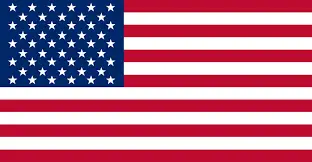The Story of a Nation: A Brief Overview of US History

The United States of America, often simply called America, is a vast country in North America with a history spanning centuries. It’s a land shaped by diverse cultures, revolutionary changes, and immense global influence. Understanding its journey requires a look at several pivotal periods that forged the nation it is today.
Early Settlements and European Arrival
Long before European feet touched its shores, the land that would become the United States was home to numerous Indigenous tribes, each with unique cultures, languages, and traditions. With the arrival of Christopher Columbus in the late 15th century, European powers – primarily Britain, France, and Spain – began establishing colonies.
British colonies, predominantly settled along the East Coast, gradually expanded as new settlers arrived from Europe. While their economic and social structures varied, a growing desire for self-governance began to take root in all of them.
The American Revolution and Independence
By the mid-18th century, tensions between Great Britain and its thirteen American colonies escalated. The imposition of new taxes (like the Stamp Act and Townshend Acts) and policies by the British government sparked strong resistance in the colonies. The cry of “No taxation without representation” became a rallying call, fueling the movement for independence.
The American Revolution began in 1775. Under the leadership of George Washington, the colonies fought against the British forces. On July 4, 1776, the Declaration of Independence was adopted, formally proclaiming their separation from Britain. The war concluded with the Treaty of Paris in 1783, solidifying America’s status as an independent and sovereign nation.
Formation of the Republic and Expansion
Following independence, the United States drafted a new governing document, the Constitution, which was adopted in 1787. This Constitution established a strong federal government and guaranteed citizens’ rights. George Washington became the first President of the United States.
The 19th century saw rapid westward expansion. Large territorial acquisitions, such as the Louisiana Purchase, significantly increased the country’s landmass, and the concept of “Manifest Destiny” fueled further expansion. This period also tragically involved the displacement of Native Americans from their lands, and the issue of slavery became a severe social and political conflict.
The Civil War and Reconstruction
The issue of slavery eventually led to a growing divide between the Northern and Southern states. The South had an agrarian economy based on slave labor, while the industrializing North largely opposed slavery. In 1861, the Civil War erupted when Southern states seceded from the Union to form the Confederate States of America.
Under the leadership of President Abraham Lincoln, the Union fought to abolish slavery and preserve the nation’s unity. The war concluded in 1865, and slavery was constitutionally abolished. The period following the Civil War, known as Reconstruction, focused on reintegrating the Southern states into the Union and securing rights for formerly enslaved people.
Industrial Growth and Rise to Global Power
The late 19th and early 20th centuries witnessed rapid industrial growth in America. Railroads, factories, and new inventions transformed the economy. Mass immigration from Europe further boosted the nation’s population and workforce. This era, often called the “Gilded Age,” was marked by both immense wealth and growing social inequalities.
In the 20th century, the U.S. played a crucial role in two World Wars. World War I and especially World War II propelled the U.S. to emerge as a global superpower. During the Cold War, the U.S. engaged in an ideological and military rivalry with the Soviet Union.
Modern America: Civil Rights and the 21st Century
The mid-20th century saw the Civil Rights Movement, a pivotal struggle for equal rights for African Americans and other minorities. Figures like Martin Luther King Jr. led this movement, resulting in landmark legislation and significant social change.
Following the end of the Cold War in 1991, the U.S. became the world’s sole superpower. In the 21st century, America has faced challenges such as the 9/11 terrorist attacks, wars in the Middle East, the 2008 financial crisis, and increasing political polarization. Despite these, it remains a leading center for innovation, culture, and democratic values globally.
The history of the United States is a narrative of diversity, challenges, and continuous evolution. It’s a nation that has consistently strived to reinvent itself, and its future, like its past, promises to be both complex and compelling.
Share this content:


Leave a Reply